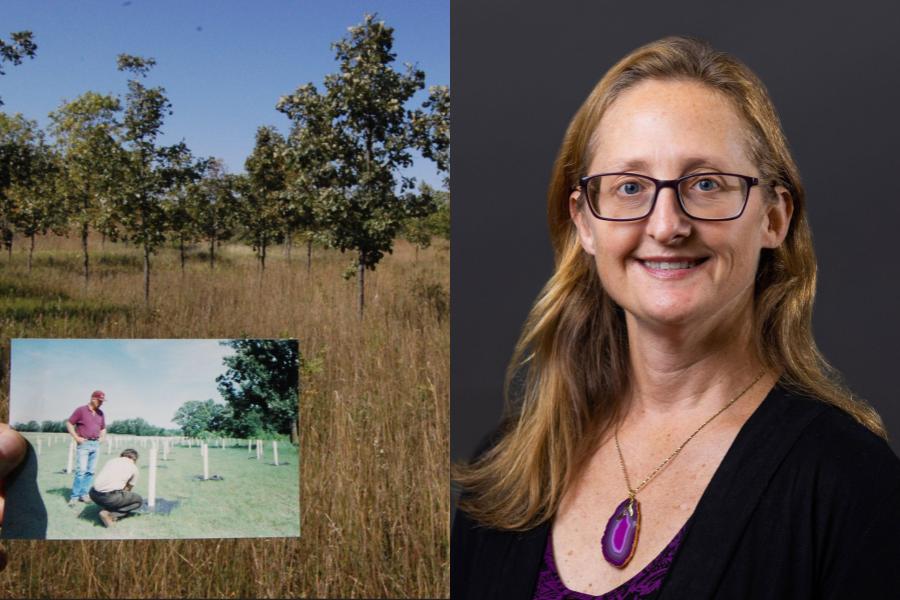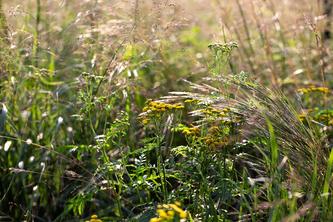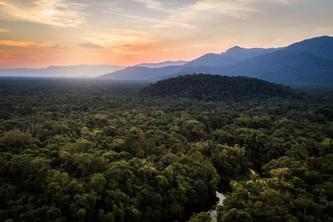
Trees have started showing their spectacular fall colors across Minnesota. This year, the changing leaves have come early due to the stresses of ongoing drought. Drought, flooding and higher temperatures associated with climate change are all factors prompting University of Minnesota experts to think about the future of our forests.
Extension foresters recently published multiple regional lists of trees and plants recommended for a climate resilient future. Extension Educator Angela Gupta answers questions about these lists and the future of our forests.
Q: What do people need to know about the impact of climate change on Minnesota’s forests?
Gupta: If somebody turned the heat up a few degrees in your house, you might open a window or spend more time outside. But trees and plants can’t move. Changes in temperature, longer and deeper droughts, storms, pests and disease all change the ways trees and plants grow and thrive.
It’s important to note that climate change will impact species differently. Many trees, plants and wildlife in southern Minnesota have native ranges much further south, so may be naturally more resilient to a warmer ecosystem. But the northern conifer forests have always been at the very southern edge of their native range which extends far into Canada. As Minnesota gets warmer those forests will continue to creep north and out of Minnesota.
Q: Your U of M team has recently published lists of recommended tree and plant species for each ecological region in Minnesota. How can people use these lists?
Gupta: Minnesotans love to plant trees. But trees live a long time, and we want to plant trees that will thrive not just this year, but 50-100 years from now. These new lists combine deep knowledge about Minnesota’s natural communities with emerging research about how tree and plant species are expected to respond to a changing climate.
These lists give woodland owners clear, straightforward guidance on what species are likely to thrive in the future. This guidance is specific to every part of Minnesota and landowners can use this list to help select trees for upcoming plantings. We’ve also included native ground level plant species for each region for people interested in rewilding their forest.
The specific list of trees and plants changes by ecoregion, but commonly white oak species, hickories, serviceberries, redbud and walnut do well. Plants including hazelnuts, willows, some roses and mayflowers are also common on these lists. There are many more trees and plants recommended on our lists. You can find a full list of recommendations by ecological region by visiting z.umn.edu/climate-ready.
Q: We’re hearing the term “rewilding." What does that mean and how does it connect to these recommendations?
Gupta: Rewilding embraces a future forest that will look different than those of the past. It values the forest as a whole system that can be healthy, sustainable and resilient, even if the individual species are different or are arranged in a different way.
I think about this like a high school soccer team. A thriving school environment and coaching staff can help a team achieve greatness year over year, but the individual players change. The school and coaches can prepare by developing players early and can monitor for changes in competition, rules, facilities and leagues to ensure their program continues to succeed. In our forests, we can do the same by monitoring the changing environment, removing competition like invasive species, growing new trees and prioritizing plants that may do well in the future, while we continue to nurture the whole forest.
Q: If a tree or plant doesn't appear on this list, does it mean we shouldn’t plant it?
Gupta: Make no mistake: Minnesota will have big, healthy, thriving aspen, pines, and spruces for many decades. And we hope landowners will continue to plant and care for the species they love. But to ensure a future forest that’s as healthy and productive as we have now, we’ll need to adapt.
Our lists can help landowners make informed decisions to help our whole forest ecosystems adapt. This will likely include a combination of species new to that forest, prioritizing currently native trees and plants that are predicted to do well, and nurturing targeted areas to persist much as they are today. This work may also include management like invasive plant removal and forest thinning to ensure they’re poised to resist the stresses that climate change will bring.
Q: When it comes to planning for woodland management, what are the key times on the calendar?
Gupta: Woodland owners commonly preorder tree seedlings in the fall. The fall is also a great time to plant larger trees. Early spring is when most plant sales happen, and we’re excited to see more native woodland plants being offered at nurseries across the state.
All of the native plants, shrubs and vines on these lists are in their native region and may already be in your woods. For those, the summer is a great time to learn how to identify them using field guides or free smartphone apps such as iNaturalist. In some cases all it will take is for land stewards to think about these native plants as not weeds but as valuable players in our diverse forest ecosystem.
Angela Gupta is an Extension professor and educator in forestry. Her areas of interest include invasive species early detection and management, participatory science, natural resource management, climate adaptation and forestry. She is based out of the Extension regional office in Rochester.
About “Talking...with U of M”
“Talking...with U of M” is a resource whereby University of Minnesota faculty answer questions on current and other topics of general interest. Feel free to republish this content. If you would like to schedule an interview with the faculty member or have topics you’d like the University of Minnesota to explore for future “Talking...with U of M,” please contact University Public Relations at [email protected].
- Categories:
- Agriculture and Environment
- Forestry





